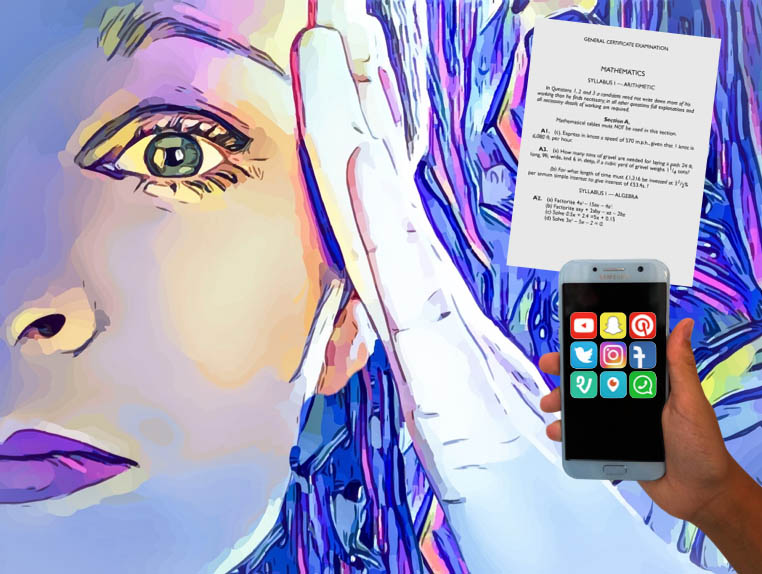
The average high school student today experiences the same level of anxiety as the average psychiatric patient of the 1950s.
Take a moment to let that sink in: teenagers who are now considered normal would have been referred for specialist treatment in the 1950s.
Professor of Psychology at San Diego State University Dr Jean Twenge believes the increase in mental health issues is due to how teenagers spend their time – on smartphones and social media. She states:
“Right when smartphones became common, and teens started spending less time face-to-face, their psychological well-being plummeted.”
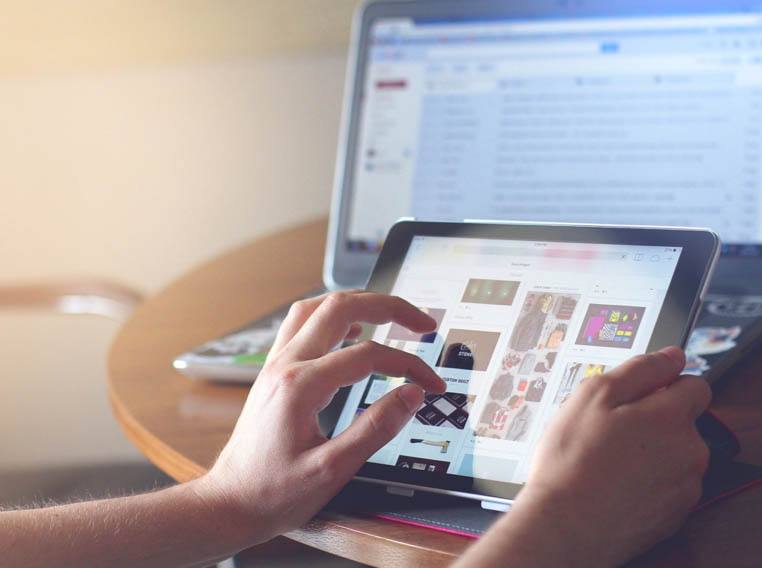
It turns out the more time you spend in front of a screen and on social media, the more depressed and anxious you’re likely to feel. This article helps to explain why this is the case.
Stress stops you from enjoying minutes, hours and days of your life. It also makes learning information incredibly difficult.
A stressed brain is like a computer that has been infected with a Trojan virus. It can’t process information efficiently. It runs really slowly and often freezes. Its systems have gone haywire.
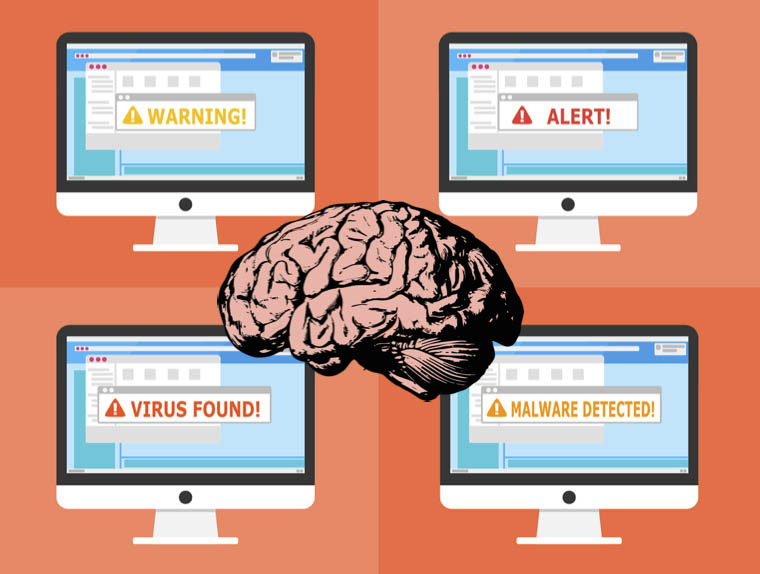
Studies show the build up of toxic stress in the brain can shorten our telomeres making us age faster and lead to the development of Alzheimer’s.
There’s good stress and then there’s bad stress.
Good stress can help motivate you and propel you into action. It can make you mentally sharper and help you lift your game.
Bad stress is toxic stress that lingers in your brain and body. If not managed well, it can cause serious damage.
If you’re now thinking, That’s it! I’m dropping out of school and university. It’s just too stressful!, think again. Why? Because stress that lingers isn’t always harmful.
Neuroscientists Doctors Dean and Ayesha Sherzai (authors of The Alzheimer’s Solution) argue that we should welcome some forms of chronic stress. They state:
“Pursuing long-term goals towards an important milestone (getting an academic degree, for example, or changing a lifelong habit) can seem overwhelming, but this kind of purposeful action actually creates significant cognitive reserve (a measure of the brain’s resilience). The associated stress may in fact be chronic, but it fits your vision and purpose. The stress has both a direction and a timeline: you set the goal, and you’re in control.”
Here’s the critical factor when it comes to stress: you need to be the boss of it (i.e. in control and able to manage it).
Neuroscientist Doctor Richard Restak (author of Think Smart) states:
“It [the adolescent brain] doesn’t manage stress very well. Typically stress in an adult brain causes a rise in cortisol levels (a measure of stress) followed by a gradual decrease over an hour or two.
In adolescents, that burst of cortisol hangs around a lot longer, resulting in sustained exposure of the brain to harmful effects, such as shrinkage of cells in the hippocampus (resulting in memory loss and depression) and the amygdala (resulting in anxiety and other overwhelming emotions).”
He goes onto state:
“This has important consequences because the hippocampus, the amygdala, and the prefrontal cortex are the three brain areas that undergo major changes during adolescence. If these brain areas are damaged by stress hormones, the effect can extend into adulthood …”
In short, stress that is poorly managed can mess with the growth and resilience of the teenage brain.
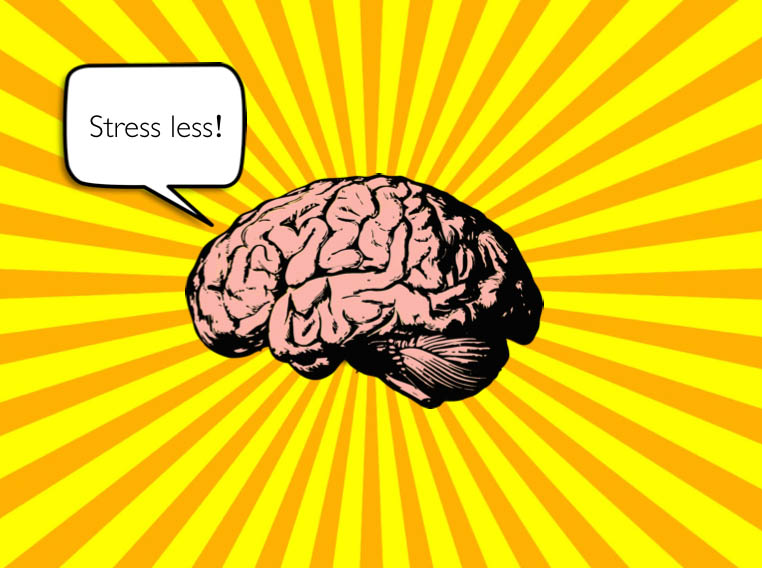
You need tools, hacks and strategies because toxic stress is an ugly beast. The good news is there is no shortage of effective strategies out there: meditation, walks in nature, avoiding multi-tasking, having time-out from technology (e.g. The Back to the 1950s technique), exercise, etc.
The challenge is to make stress management a top priority. Set aside some time each day to engage in activities that relax your body and brain. If you want to optimise your brainpower, it’s well worth spending the time to do this.
In the next blog post, I’ll share a range of different strategies to decrease and manage toxic stress in your life.
Share This:
As someone who loves to read, I always look for great books to add to my shelves and the growing pile of books next to my bed. Over the past year, I’ve stumbled upon some amazing books that I’m excited to share with you.
Whether you’re looking to enhance your thinking, organise your life, create new habits, or get absorbed in an inspiring story, this list has something for everyone.
Here are nine standout books from my 2024 reading list that are well worth your time.
Let me know which ones you’re excited to pick up—and don’t forget to share your recommendations with me. Let’s go!
“We use our brains entirely too much – to the detriment of our ability to think intelligently. What we need to do is think outside the brain.”
There’s an old assumption that thinking happens inside the brain. But this book blows that assumption apart. Annie Murphy Paul presents compelling research that shows there are many ways we can use the world around us to improve our ability to think, learn, and unleash creative ideas.
This book changed my behaviour in several ways:
I’ve been able to “extend my intelligence” using my body, physical space, and relationships. If you’re curious about the science behind these behaviours, I recommend reading this book.
“Avoid all exercise”, “Maximise screen time”, and “Can’t afford it? Get it anyway”.
These are just three of the 40 behaviours and habits psychologist Dr Randy Paterson encourages us to engage in to guarantee a lifetime of misery.
This book takes advice we all need to hear, flips it, and presents it in a way that cuts through.
I was surprised by how motivating this book was. It made me want to move my body, stay off screens, and engage in self-care acts way more than your usual self-help book. It also helped that it was laugh-out-loud funny.
How to be Miserable was such a delight to read that I purchased Paterson’s other book for young adults (How to be Miserable in Your Twenties). Both books I highly recommend.
“A restaurant is a promise: walk in and we’ll be ready. Select anything on our menu and we’ll cook it for you quickly and well.”
Chefs can’t wing it. They need to be organised and have a plan. We can learn a lot about how to organise ourselves and manage our commitments from the culinary world.
This book outlines the philosophy and strategies of running a successful commercial kitchen and shows how to apply these ideas to navigate our lives with power and ease.
Dan Charnas discusses ideas such as slowing down to speed up, knolling, rearranging spaces to remove resistance and making first moves. As someone who loves cooking and being organised, I thoroughly enjoyed this book.
“As Australia is the third-largest exporter of fossil fuels in the world, what we do over the next handful of years really, really matters. The time for standing on the sidelines has passed.”
Joelle Gergis is a climate scientist who gave up a prestigious academic position to sound the alarm on the climate emergency. In this Quarterly Essay, she lays out the latest climate science in a clear and compelling way and shows readers what is at stake if we continue business as usual (e.g., approving new fossil fuel projects).
This essay is a heavy but essential read for all Australians who want a liveable future.
This book is a collection of nuggets of wisdom that Kevin Kelly wrote for his adult children. This is life advice he wishes he had known earlier.
At first glance, this looks like just another standard book of uplifting quotes. But don’t be mistaken. This is no ordinary book of quotes.
Kelly could have easily written entire waffly chapters on each quote, but I’m so glad he restrained himself. Each quote is small but mighty, providing plenty of food for thought and practical advice.
Here is a small selection of Kelly’s life advice that resonated with me:
“Be frugal in all things except in your passions. Select a few interests that you gleefully splurge on. In fact, be all-round thrifty so that you can splurge on your passions.”
“The best work ethic requires a good rest ethic.”
“We tend to overestimate what we can do in a day and underestimate what we can achieve in a decade. Miraculous things can be accomplished if you give it 10 years.”
The Australian government recently passed legislation to ban social media use by teenagers. Some have cited this book as the reason for the ban. If that’s true, I can certainly see why.
Social psychologist Dr Jonathan Haidt argues that we are overprotecting our children in the real world while underprotecting them online. This has led to disastrous consequences for young people’s mental health and development.
Before reading this book, I didn’t like social media companies and the manipulative strategies they use to hijack people’s time and attention. Over the years, I had read a lot of books outlining the harms of social media. What’s unique about this book is that Haidt presents a plan for cleaning up the mess these Big Tech companies have created and ensuring children develop in a healthy way.
Haidt’s plan involves keeping children off social media for as long as possible. Whether you’re a child or an adult, I firmly believe that everyone can benefit from some time away from these platforms. As Haidt succinctly puts it:
“The Anxious Generation is a book about how to reclaim human life for human beings in all generations.”
This book argues that we’ve been brainwashed to measure whether we are winning at life by the size of our possessions and the amount of money we have. However, according to author Robin Sharma, this definition of success is far too narrow and limiting.
Sharma expands the definition of wealth and what it means to “live abundantly and beautifully” by sharing other forms of wealth often overlooked by capitalist culture.
If we invested more time in personal growth, building connections and community, and cultivating good health, we would feel deeply alive rather than exhausted from the hedonic treadmill.
I’ll leave you with this quote that struck a chord with me (written in the chapter on Health):
“If you don’t feel good physically, mentally and spiritually, all the money, possessions and fame in the world mean nothing. Lose your wellness (which I pray you never will) and I promise you that you’ll spend the rest of your days trying to get it back.”
This delightful children’s book starts with Jim Panzee waking up feeling grumpy.
“The sun was too bright, the sky was too blue, and the bananas were too sweet”.
Have you ever woken up feeling a little bit off?
This book is a fun way for everyone (not just little kids) to understand human emotions. It’s okay to be grumpy! It’s okay to wake up feeling a bit off. Allow yourself to experience these emotions. In time, they shall pass.
One of my relatives is obsessed with The Wiggles (an Australian children’s performance group). After reading Anthony Field’s memoir (the Blue Wiggle), I finally understand all the fuss. The Wiggles are amazing!
Field’s memoir takes a deep dive into how the band started, how they managed to stay true to their values and mission, and the challenges they faced along the way.
Field is honest about his difficult time in school, media blunders, and his struggles with physical and mental health issues over the years. What can I say? Out of the Blue is a refreshing, wholesome read.
“I’ve been thrilled to become the major on-stage instrumentalist playing guitar, bass, drums, mandolin, bouzouki, and anything else a curious child might want to explore musically. It turns out that the maintenance of a child-like wonder about the world isn’t so hard to retain, even after you turn 60.”
There you have it! Nine books that shifted my perspective and changed my behaviour in some way. Now, it’s over to you – what books helped to shape your year? Are there any you’d recommend?
I’d love to hear your recommendations.

If I’m honest with myself, there was a time when technology was doing me more harm than good.
On Facebook, I frequently fell into the comparison trap (comparing myself to people who had posted delicious dinners, amazing holiday photos, etc).
On Twitter, I’d get baited by trolls (and I’d foolishly take the bait).
Throughout the day, I’d constantly check my phone and email, which left me feeling jittery and chaotic.
Big Tech was constantly hijacking my time, energy, and attention. Every time I retreated to my devices for a quick shot of dopamine, I moved further away from my goals. I didn’t like this, and I knew something needed to change.
Over the past three years, I’ve implemented many practices to regain control of my time, energy, and attention (including deleting all social media).
These practices have made a big difference in my life. But I’m well aware that not everyone feels the same way I do about Big Tech, nor are they in a position to be able to delete all their accounts.
Following a school presentation, I spoke with a small group of year 8 students. I shared with them that I didn’t use any social media, to which a year 8 girl quickly chimed in:
“My grandma has Facebook. What’s your excuse?”
Her words struck me like a bolt of lightning. I didn’t know what to say.
It highlighted how adopting these apps is the norm for a young person.
When everyone else has a smartphone and is using social media (including your parents and grandparents), why would you question using them?
I couldn’t forget the year 8 girl’s words. While I appreciated her candidness, it left me slightly disturbed.
At the same time, it increased my motivation to resist Big Tech. I started searching for role models: people actively resisting Big tech and this hyperconnected, fast-paced way of life.
One community kept popping up in my research: the Amish.
The Amish are often portrayed as being technologically impaired. A classic example is Weird Al Yankovic’s music video Amish Paradise (a parody of Coolio’s mega-hit Gangsta’s Paradise).

In this video, Weird Al sings:
I never wear buttons but I got a cool hat
And my homies agree I really look good in black, fool
If you come to visit, you’ll be bored to tears
We haven’t even paid the phone bill in 300 years
But we ain’t really quaint, so please don’t point and stare
We’re just technologically impairedThere’s no phone, no lights, no motorcar
Not a single luxury
Like Robinson Crusoe
It’s as primitive as can be
While the Amish still mainly travel by horse and buggy and shun many modern technologies, such as televisions, radios, and cars, they are not ‘technologically impaired’ as Weird Al makes out.
When it comes to cultivating healthy digital habits, there is a lot we can learn from the Amish.
The Amish have a set of strategies that guide the adoption and use of different technologies. These strategies have allowed them to avoid being pawns for the goals of Big Tech companies, which make massive profits by seizing people’s attention.
I recently read a fascinating book called Virtually Amish, written by Dr Lindsay Ems. For her PhD research, Dr Ems spoke to Amish people about their relationship to modern technology (e.g., smartphones).

She argues that the Amish take control of their tech tools and thrive. Through adopting similar practices, we can thrive, too.
Below, I share how you can thrive by emulating Amish practices and beliefs around technology:
The Amish are not technophobes. They are ‘technoloselectives’.
They carefully consider the tech tools they’ll adopt and their functionality, tweaking them to help them achieve their goals.
The Amish don’t mindlessly purchase the latest gadgets and gizmos. Instead, they think about their values and goals and how the technology could cause unintended harm to themselves and the wider Amish community.
What are your goals?
Do your tech tools help you achieve them, or do they distract you from them?
The Amish are guided by their values (i.e., the things that are most important to them). Their values underpin everything they do.
So, what exactly do Amish people value?
• Community
• Connections with others
• Living a simple and slow-paced life
• Living a spiritually rich life
• Being self-sufficient
The Amish use these values to guide their adoption of technology.
An example of this can be seen with the arrival of the home telephone (not smartphone). Dr Ems shares how the Amish decided to ban the telephone from being inside the family home.

This ban came about after careful consideration and reflection on their values. The Amish value connections with family, friends, and the community. They don’t want to be the kind of person who interrupts a conversation by answering a telephone call. For this reason, telephones are located outside Amish family homes or nearby.
What are the things that are most important to you?
How does technology impact on those things?
Does it enrich those things or diminish them?
The Amish understand that technology can cause harm. Subsequently, they intentionally delay adopting new technology until they see its impact on others.
Does it destroy family life? Does it wreak havoc on their ability to pay attention and distract them from their spiritual life?
If so, the technology threatens their culture and religion, and for these reasons, it should be avoided.
Before adopting a piece of technology, the Amish need to be clear about two things:
1) The functionality of the technology (what it can do)
2) The potential social impacts of the technology
Once they deeply understand these things, it is then decided whether the technology is adopted or not.
It may come as no surprise that Amish people view the smartphone as an incredibly dangerous innovation. Many Amish communities have bans on this device.
How do you feel after spending time on social media?
Have you seen things posted on social media that weren’t true or were exaggerated?

When an Amish person wants to use a new technology, that technology will go through a formal decision-making process.
The community (in particular, the leaders) will consider the future with this technology. They’ll try to imagine how the technology could change their way of life.
Questions the Amish reflect on include:
• What are the advantages and disadvantages of the technology?
• What might come with it that we might not anticipate?
• Could someone get addicted to it?
• Is it a need or a want?
• Can the technology be restrained?
In her book Virtually Amish, Dr Ems provides the example of an Amish business owner asking the community leaders if he could have permission to use a label maker for his business.
After careful consideration, the leaders ruled label makers could be allowed for the following reasons:
• They are not addictive
• They can’t be used for recreational purposes (e.g., playing games or entertainment)
Think of a new technology (device or app) you want to adopt. Could it become addictive?
Many Amish people believe the issue is not whether you use a smartphone or social media but how you use it. It’s important that the Amish remain in control of their use of tech and place limits on it.
It’s also important that the technology is not visible (i.e., you don’t pull your smartphone out in Church or during a conversation). Being discrete in the way one uses technology shows respect for Amish values.
How do you use the tech in your life?
Are you in control of your use?
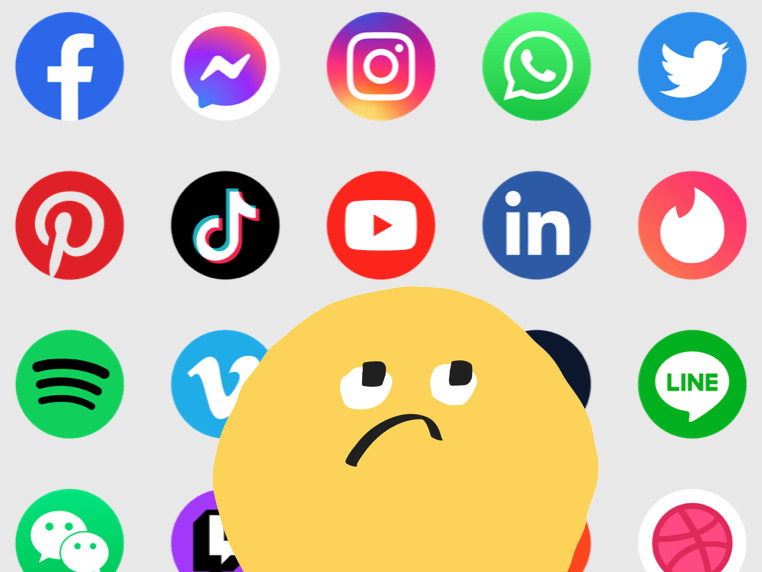
Amish people think about not just how they use the technology but what kind of person they become when they use it.
This point resonated with me deeply. I can’t say I’ve always liked who I become when I use certain technology.
A few years ago, I babysat my friends’ children when my friends went out for a kid-free meal. I look back and cringe when I think about how the experience unfolded.
Before going to my friend’s place to start babysitting, I got into a heated text discussion with some people in a group chat. Things were said that upset me.
For most of the night, I was on my phone, texting back and forth, not present with these young children. At one point, the little boy tugged on my arm to get my attention. “Aunty Jane, come play!” he said.
What can I say? I felt terrible. This certainly was not my finest moment. I had become the kind of caregiver I am usually quick to judge: distracted and disengaged.
I vowed to avoid trying to resolve issues by text and leave my phone at home next time to be fully present with the kids.
When you use social media, what sort of person do you become?
The Amish take modern tech tools and modify them to help them achieve their goals.
The plain mobile phone is an example of this. Amish people have created a mobile phone that can only make calls. It doesn’t have a camera, games, access to the Internet, or the ability to send text messages.
Similarly, the plain computer allows Amish to make spreadsheets, do word processing, and construct simple drawings. This allows them to complete tasks without being distracted by other things.
In other words, the Amish create what David Kadavy (author of Mind Management, Not Time Management) would refer to as sticky tools. A sticky tool allows you to stay focused on a task without getting distracted.
What sticky tools could you consider adopting (e.g., a basic flip phone and Internet blocker app)?

The Amish take pride in growing their own food, raising barns, baking their own bread, tinkering with robotics, inventing, and making their own clothes. They are not big consumers, but they embrace a simple lifestyle and encourage human creativity.
In the modern non-Amish world, many of us are doing the polar opposite of this. We have fallen into the trap of consuming content mindlessly online (e.g., watching people bake bread instead of baking our own bread).
Don’t get me wrong—the Internet is an excellent learning tool to help us build our skills. I have turned to YouTube for many instructional videos on how to make and fix things. But doing this requires discipline because it is all too easy to get derailed by other distracting videos.
The bottom line is this: the more time we spend online, the more ads we are likely exposed to and the more our consumptive desires are stirred up. Is it any wonder so many people feel so dissatisfied with their lives?
Instead of mindlessly consuming, what can you create today?
The Amish embrace tech with inbuilt friction. In fact, inconvenience is considered a virtue.
Dr Ems shares that many Amish technologies intentionally contain ‘speed bumps’ and ‘friction’. The reason for this friction is to prevent Amish people from wasting time on the device.

I’ve found this is one of the positives associated with using a ‘basic phone’.
Last year, I experimented with using a basic flip phone with limited functionality (I could only make calls and send texts). Texting on this phone was so painfully slow that it made me want to avoid getting into long text discussions with people. It was easier to pick up the phone and call people.
Using a smartphone to text your friends may be easier than making a phone call, but as the Amish strongly believe, easier is not always better.
How can you build friction into your tech use?
Can you embrace analog alternatives to decrease your screen time?
How much control do you have over your time, energy, and attention? As Chris Bailey writes in his book How to Calm Your Mind, “On the Internet, our intentions very quickly slip from our grasp.”
If you want to thrive online and offline, consider adopting some of the tech habits of the Amish. By limiting their tech use, the Amish have been able to remain mentally free and protect their way of life.
If more of us adopted Amish tech practices (e.g., being intentional with our tech use and placing limits on it), we’d most likely feel calmer and less anxious. We’d also spend more time engaged in activities that bring us joy and are aligned with what we value.

If so, you could be suffering from decision fatigue.
Decision fatigue occurs when you have to repeatedly make decisions. Every decision you make takes effort and depletes some of your mental resources. By the end of the day – after making hundreds of decisions – you feel mentally drained.
You struggle to make simple decisions (e.g., “What will I have for dinner?”) and the quality of your decisions deteriorates too (“I’ll get Uber eats”).
In the book The Gap and The Gain, Dr Benjamin Hardy describes decision fatigue as follows:
“Decision fatigue happens when you’re not sure what you’re going to do. It’s when you’re torn between options and, due to your indecisiveness, you often cave to the tempting worse option.”
Sound familiar?
Instead of studying, you go on social media.
Instead of cooking a healthy meal for dinner, you order greasy fish and chips.
Instead of getting to bed at a reasonable hour, you watch another episode on Netflix.
Unless you have the self-discipline and mental clarity of a Zen master, decision fatigue is something we have all experienced.
Research has found even people who are expert decision makers (i.e., judges) suffer from decision fatigue.
In one study researchers examined 1,112 judicial parole decisions by eight experienced judges at different times throughout the day.
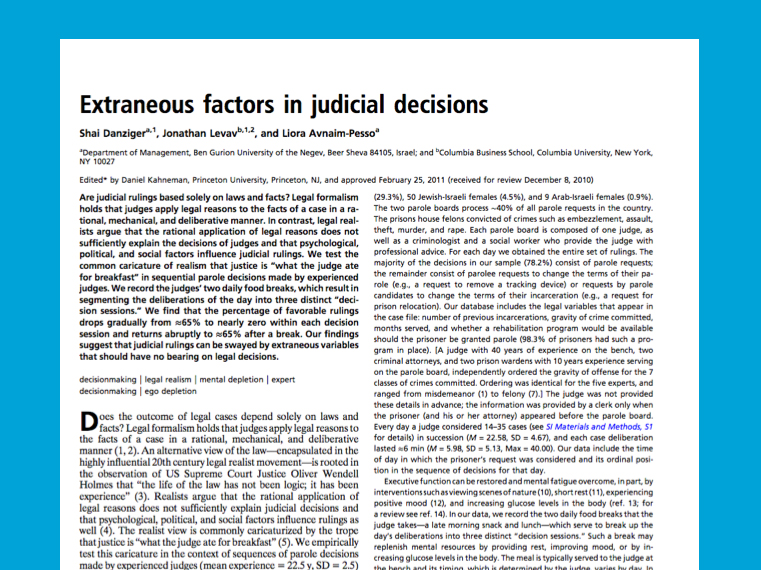
The researchers found if prisoners appeared before the judges at the very beginning of the day or after a food break (morning tea or lunch), they were more likely to get granted parole than prisoners who appeared later in the sequence of cases in a session.
In fact, they found the probability of a favourable decision dropped from 65% to almost 0% from the first ruling to the last ruling with each sitting session.

What was going on?
When the judges started their work day, they had a lot of mental resources available. One would assume these judges had slept well and had some breakfast.
But as each sitting session progressed, each decision they made depleted their mental resources and executive function. Just before morning tea or lunch, their mental resources would have been running low.
The researchers argued that when the judges had limited mental resources they became increasingly punitive. They simplified their judicial decisions and went with the status quo which was to deny parole requests.
This phenomenon is known as the Irrational hungry judge effect.
What do you do with a hangry judge?
Give them plenty of breaks and food.
In this study, the judges’ mental resources seemed to be replenished and their decision making ability restored after morning tea and lunch breaks.
What does this research on hangry judges have to do with your studies and work?
Here’s how it relates . . .
For optimal brainpower, you have to schedule in rest breaks. If you don’t schedule in regular rest breaks, they often don’t happen. You also need to take care of yourself with healthy food and healthy lifestyle practices and eliminate trivial decisions wherever you can.
Here are some simple and practical things you can do to overcome decision fatigue and keep your mental resources topped up:
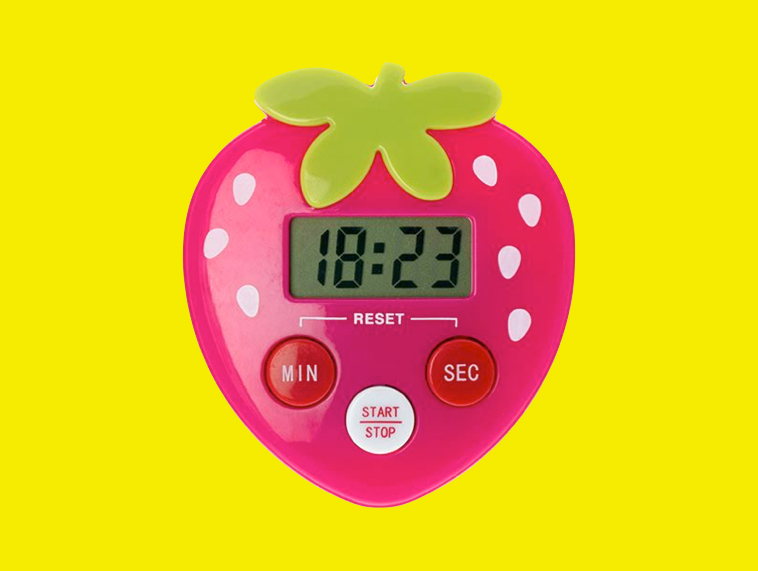
I like to have a digital timer within arms reach at all times when I’m working. At the start of a work session, I’ll set the timer for 20-30 minutes. When the timer goes off that’s my cue to get up and move.
The timer reminds me that:
1) I’m not a robot; and
2) I need to take breaks to replenish my mental resources.
Clicking and scrolling through your social media feed can rapidly deplete your mental resources. Jumping around the Internet from one random post or video to another can erode your attention and willpower. As the Center for Humane Technology states:
“When endless content creates an overwhelming amount of want, we can end up addicted to seeking satisfaction, clicking and scrolling, mindlessly consuming content, often with minimal oversight from cognitive control regions of the brain. Ultimately, this behavior drains our energy.”
Social media algorithms also promote content that provoke angry reactions over neutral and positive reactions. When you see posts that fill you with anger and other negative emotions (e.g., fear, envy, and anxiety), this can also leave you feeling drained.
So, be intentional about your social media use. Ask yourself, “Why am I going on here? What’s the point?” If it’s for fun and/or entertainment, that’s fine. But it’s a good idea to have your digital timer nearby and set a time limit. When the timer goes off, say out loud “That’s enough. I’m getting off!”.

Your brain needs energy to function at an optimal level. Where does it get that energy from?
Simple answer: food.
Author of The Willpower Instinct Dr Kelly McGonigal recommends fuelling your body with foods that give you lasting energy. She states:
“Most psychologists and nutritionists recommend a low-glycemic diet- that is, one that helps you keep your blood sugar steady. Low-glycemic foods include lean proteins, nuts and beans, high-fiber grains and cereals, and most fruits and vegetables-basically, food that looks like its natural state and doesn’t have a ton of added sugar, fat, and chemicals.”
Establishing habits, pre-planned responses, and checklists reduces the number of decisions you need to make, subsequently preventing decision fatigue.
I’m a big fan of tiny habits and implementation intentions to help streamline the day. I also have a folder of checklists to help me pack equipment for various trips, work jobs, and community events.
These checklists make all the difference, especially when packing for trips away. The night before I go away, I grab my packing list and start throwing items into my bag. Very little mental effort and/or decision making is required! I get to start my holiday full of energy rather than feeling mentally depleted and grumpy.

If you’re feeling overworked and mentally frazzled, head outside for a good dose of nature. Research by Hartig shows nature can restore deficits in attention and make people think and feel better.
I understand when you’re feeling tired, the last thing you want to do is get up and move. But research shows a five minute walk can do your brain the world of good.
One study found taking six regular five minute walking breaks every hour left people feeling more energised and less fatigued than people who just took one 30 minute walking break and sat for the rest of the day.

Can you lay out your clothes the night before? Pack your lunch and bag before you go to bed? Write a short to-do list for the next day? If you can knock off a few trivial decisions the night before, this is going to lighten your mental load the next day.
I love the energising effect of taking a post-lunch/afternoon siesta. I started taking power naps when I was an exchange student in Italy. My Italian host mother insisted I take a nap after lunch (it’s what everyone in the village did). So, when in Rome . . .
I grew to love taking naps. In fact, I’ve continued the practice for the past 20 years.
I recommend limiting your naps to 15-30 minutes in duration (any longer and you risk waking up feeling groggy). To avoid messing with your sleep at night, make sure you take your nap before 5pm.
We can all learn a thing or two from the example of the punitive behaviour of the hangry judges. To avoid the Irrational hungry judge effect you need to take care of yourself.
The good news is there’s a lot you can do to replenish your mental resources. If you take a few minutes here and there to engage in tiny self care practices, not only will you feel better but you’ll more likely make better decisions.
Dr Jane Genovese delivers interactive and engaging study skills sessions for Australian secondary schools. She has worked with thousands of secondary students, parents, teachers and lifelong learners over the past 15 years.
Get FREE study and life strategies by signing up to Dr Jane’s newsletter:
© 2025 Learning Fundamentals